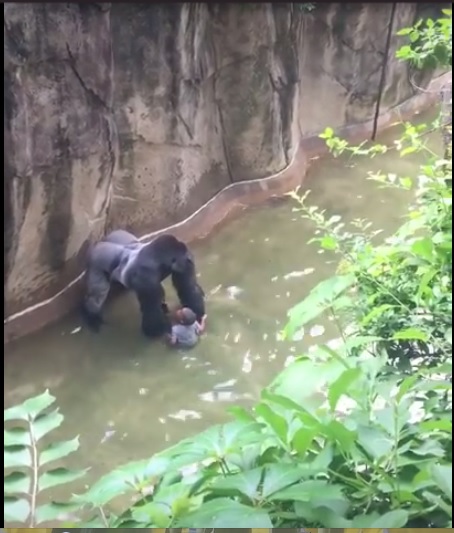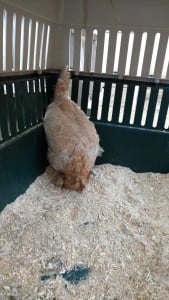When the news came out this week that researchers now believe that pesticides are causing what is commonly referred to at Colony Collapse Disorder, my guess is that most people scanned the headline and moved on.
But I read the story with interest, because ever since I watched two documentaries on bees I’ve been more and more intrigued with how our food supply – and the overall health of the nation – is tied to those buzzing little insects we take for granted.
Both films – “Colony” and “Vanishing of the Bees” – deal with the mystery called Colony Collapse Disorder that has decimated the honey bee industry. One day the bees are in their hives, the next, completely gone. Not even their dead little bodies left behind. It’s as if they left their hives and disappeared from the face of the earth. One fifth generation beekeeper lost his entire operation in four months.
Both films prominently feature beekeepers Dave Mendes and David Hackenberg. Hackenberg is the beekeeper who first sounded the alarm on colony collapse disorder; Mendes joined him in spearheading the effort to find out why the bees are dying and how to stop it. They’ve met with other beekeepers in the U.S. and around the world, met with chemical companies, and have led the charge to get to the bottom of Colony Collapse Disorder.
There are other theories about why bees aren’t thriving: genetic manipulation of the queens leading to a lack of diversity in the bee gene pool and parasites are just two examples. But those are things have always been around, and while they can explain some of the mystery, they can’t explain the sustained and extensive vanishing of the bees seen in recent years. Or why it happened first in Europe and then in the U.S., and how both events appear to be tied to the use of neonicotinoids commonly used in agriculture worldwide.
It’s a complicated subject, and I’m no scientist. But from what I understand after watching several documentaries, here’s what happened.
Farmers used to grow a lot of different crops on their farms, which allowed for diversity of agriculture and naturally helped keep pests away. As farmers became monocultures (ie: farming hundreds or thousands of acres of only corn or only soy or only wheat), those natural ways of dealing with pests and insects went away, because genetic uniformity leads to less resistance to disease and insects. So farmers needed other ways save crops.
Enter chemicals developed for use in WWI and WWII. Post war, those chemicals were tweaked for use in agriculture. Nitrogen-based bombs in WWI, for example, became nitrogen-based fertilizers. Nerve gas from WWII became insecticides for agriculture. (As Hackenberg says in “Vanishing”: “We tried to kill people with this stuff. Now we’re trying to kill he bugs with it. And then we’re trying to eat the stuff. Does it make a lot of sense?” No, David, it doesn’t.)
As those monoculture farms got bigger and bigger, it became more and more difficult to selectively apply those pesticides, because you want to kill weeds and pests but not the crops.
And then in the 1970s came RoundUp, the pesticide that kills, well, everything that grows. A farmer can apply it and get rid of pests, weeds, and everything that interferes with crops. Except that RoundUp also kills the crops.
So scientists developed seeds that have an actual genetic make up that is resistant to RoundUp. Cells are naturally designed to resist intruders, so making a plant’s cells actually accept the bacterial toxin that it will then release in its leaves and fruit and pollen is really complicated. It involves first introducing a DNA that causes tumors in plants in order to break down the cell wall so that the modified DNA can then be introduced. It’s bascially forcing a plant to produce a toxin it would normally resist. The cells of the corn, for example, have been engineered to release a bacterial toxin that is immune to RoundUp.
That’s a simple way of explaining it (and the documentary “The Future of Food” does a good job explaining it.) But it’s probably enough to say that the genetically modified corn is actually registered as an insecticide. That sums up the end result.
Now, the farmer can spray his entire crop and kill anything not genetically modified to be immune to RoundUp. Bugs can eat the plant and ingest the chemical insecticides. Viola. Modern chemical pest control.
Here’s where the bees come in.
Bees are necessary for the pollination of about 1/3 of the foods we eat – apples, onions, broccoli, cranberries, blueberries and hundreds of other fruits and vegetables. The bees move from one plant to another, taking the nectar and in the process moving pollen from the pistal to the stamen. Basic plant biology, made possible by the little honey bee. Without bees to pollinate plants, we’d be up the creek, food-wise.
Except that as the bees rustle around in the plants, they also pick up that bacterial toxin and chemical insecticide produced by the genetically modified plant as well as pesticides and bring it back to the hive.
And this is at the heart of the debate over Colony Collapse Disorder.
Beekeepers have argued for years that the insecticides are interfering with the bees’ ability to orient and find their way home. Away from the hive, they die. They believe the beginning of Colony Collapse can be tied to the introduction of the new pesticides and genetically modified seeds, first in Europe and then in the U.S.
The chemical companies claim that the amount of chemical is not lethal to adult bees but they have not studied the effect a sub-lethal dose has on young bees. Beekeepers believe that the chemicals have a cumulative effect, both on the adults and the new broods. The bees bring the poison back to the hive, the poison accumulates, everyone is affected, and Colony Collapse Disorder is the end result.
As Dave Mendes says in “Colony” about the chemical companies, “They make poison. They recognize that. Their argument is that they’re doing is responsibly. We’re challenging that.”
Successfully, it appears. It’s welcome news that scientists can pinpoint some of the problem to these neonicotinoids, because it’s hopefully a loud, clanging alarm to American consumers that for too long we’ve ignored the way our desire for cheap, easy, readily available food has affected our health and the natural world.
In the U.S., farmers use 1 billion pounds of pesticides annually to grow 95% of the food we eat. That’s a lot of pesticides. Perhaps we should be looking to the bees as our canary in a coal mine.
If the little bee is being poisoned by the actual plants – not just the applied pesticide – what does prolonged exposure and ingestion do to humans? If you knew that the plant you were about to eat was a registered insecticide, would you still eat it?
Seriously, think about that for a minute.
As Michael Pollen says in “Vanishing”, “Cheap food is not as cheap as it looks. You pay the price eventually. You pay it in terms of environmental damage, you pay it in terms of future health damage. And food that looks expensive today may not be in the long term if it helps keep you healthy.”
And is all of the monoculture and resulting use of chemical pesticides worth it? Jay Feldman, executive director of Beyond Pesticides, says in “Vanishing”, “Despite our modern ingenuity, we have the same degree of crop loss we had before the pesticide revolution. We’re still losing about 1/3 of our crops in conventional agriculture to infestation.”
Is that progress, to get the same result while poisoning people and the environment?
In Europe, the use of these systemic pesticides has been banned or limited. The result? The bees are back.
Like I said, this is a really complicated subject, but it’s so important to understand the role a simple bee plays in our ability to eat. If the story has piqued your interest, I recommend you check out the documentaries “Vanishing of the Bees” and “Colony.”
And on a little tangent, if you knew how much of what you eat, drive, or use in your household is made from corn, you’d be stunned. See the documentary “King Corn” for more.











